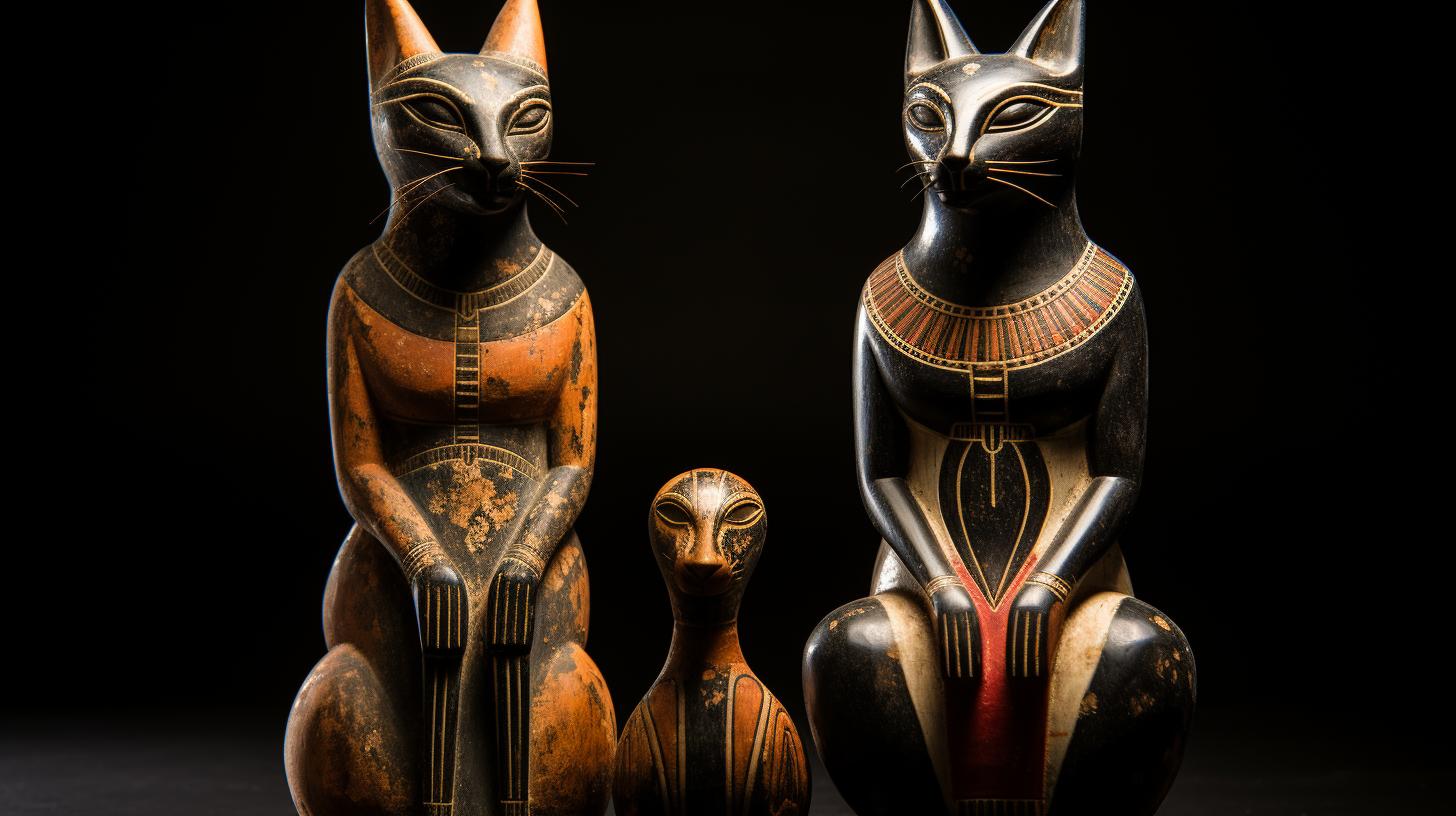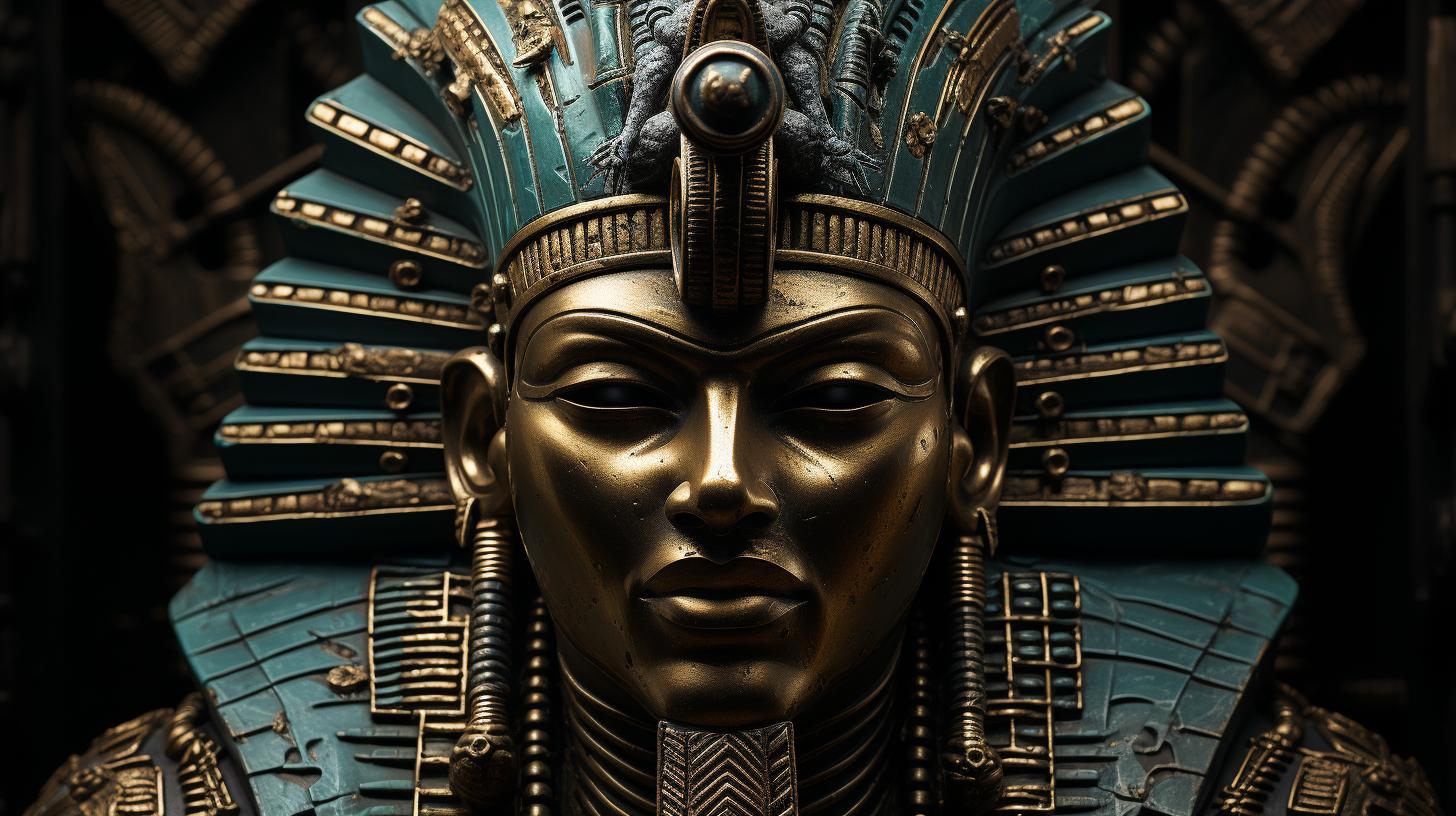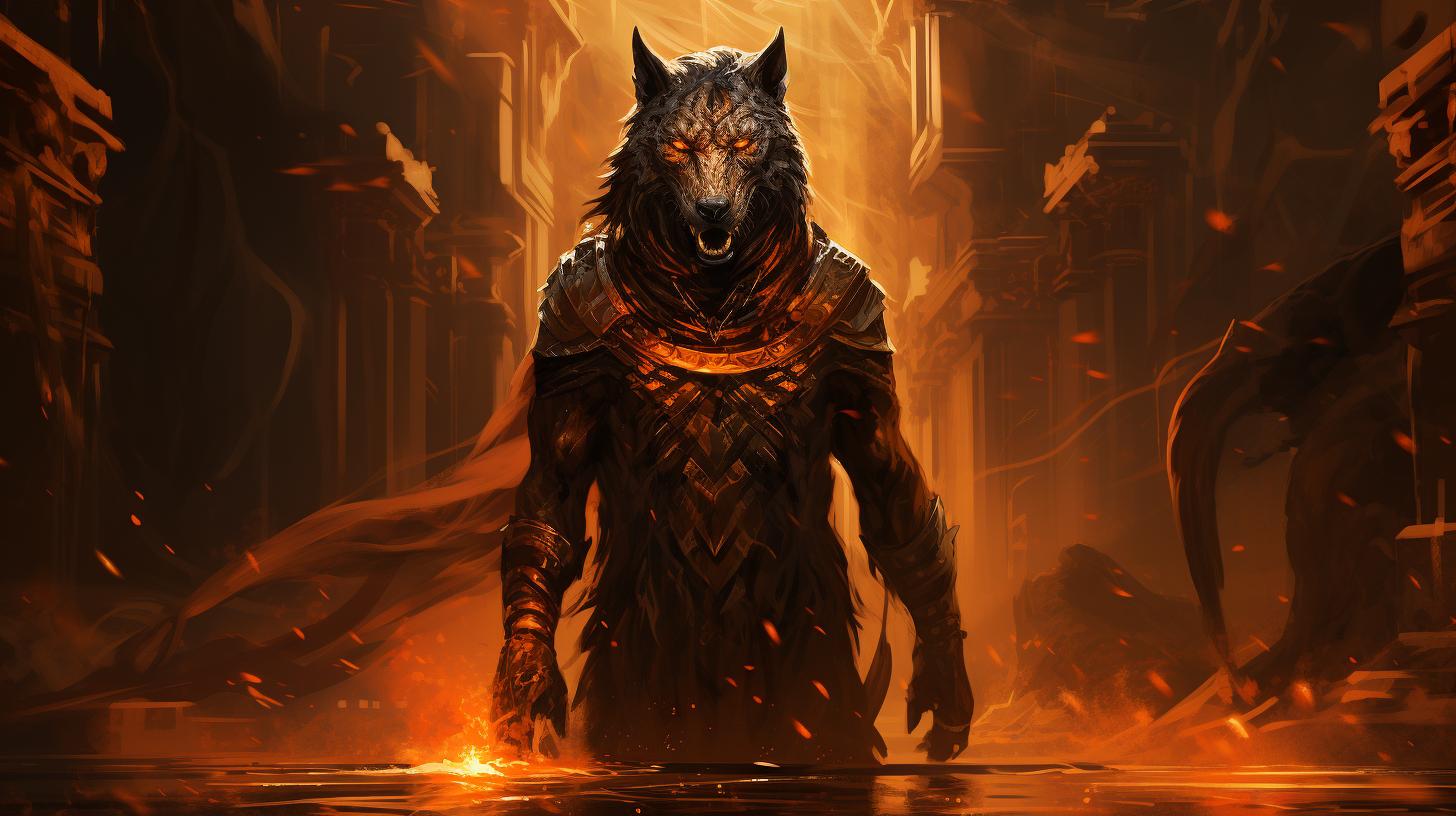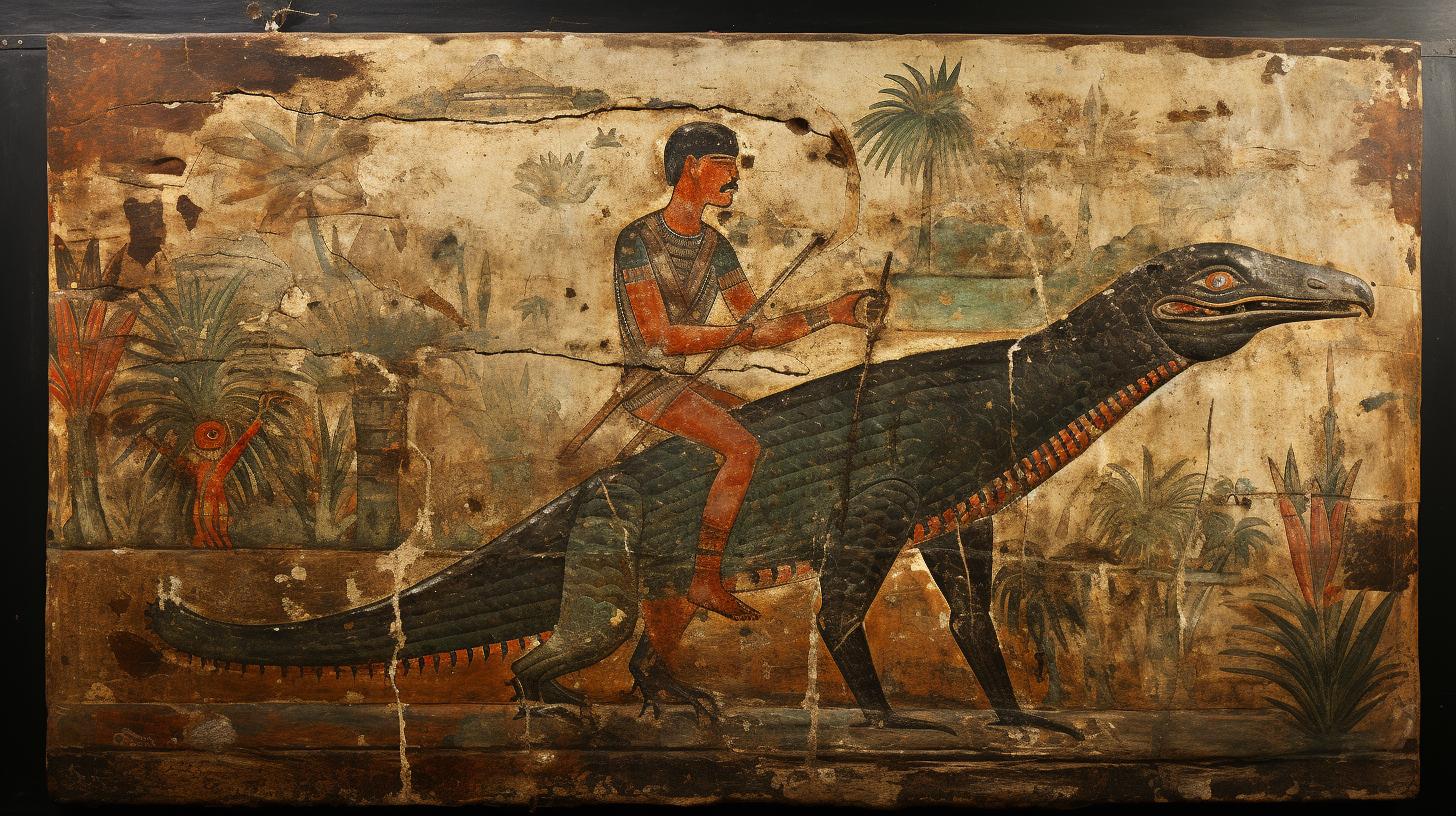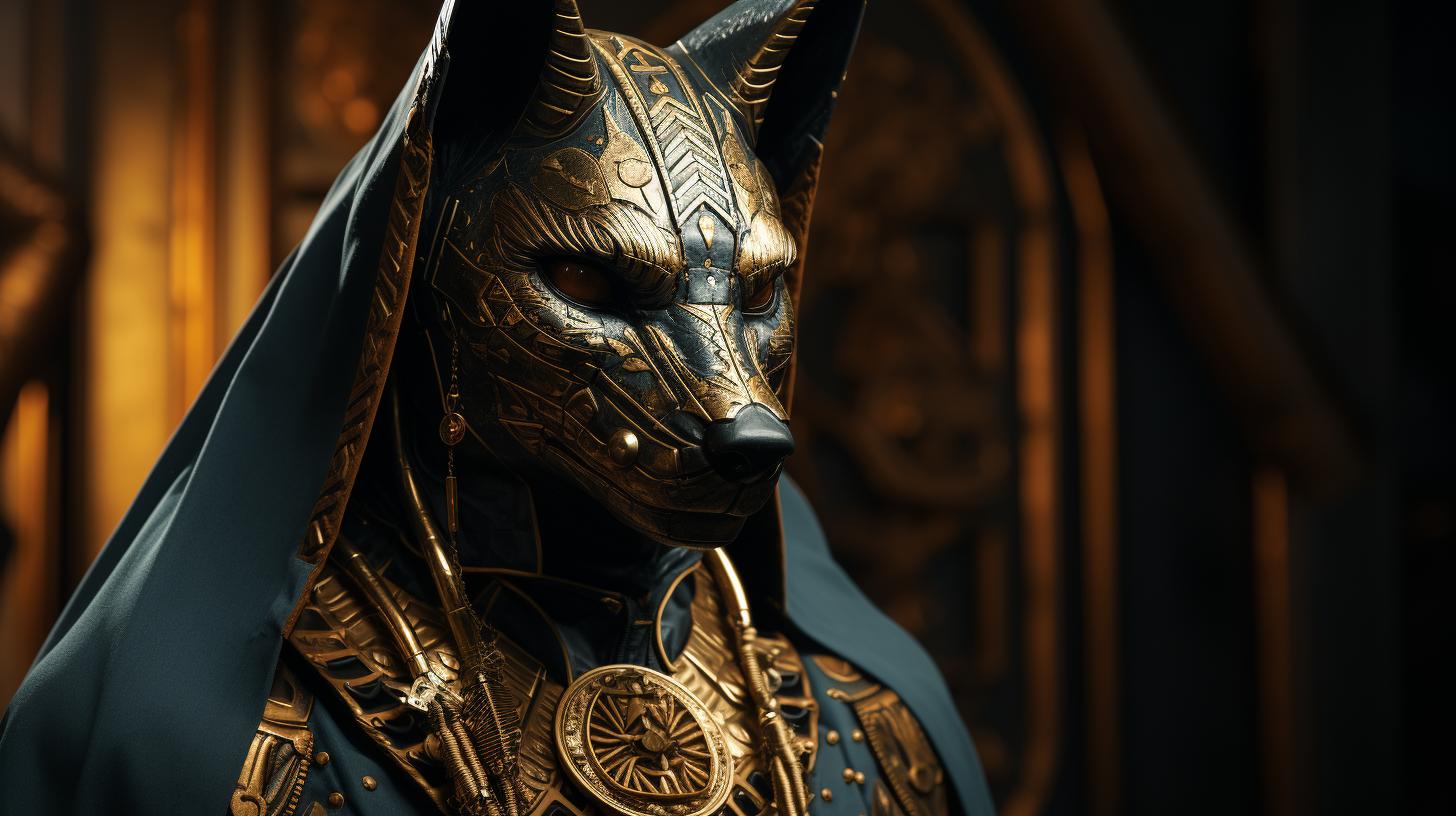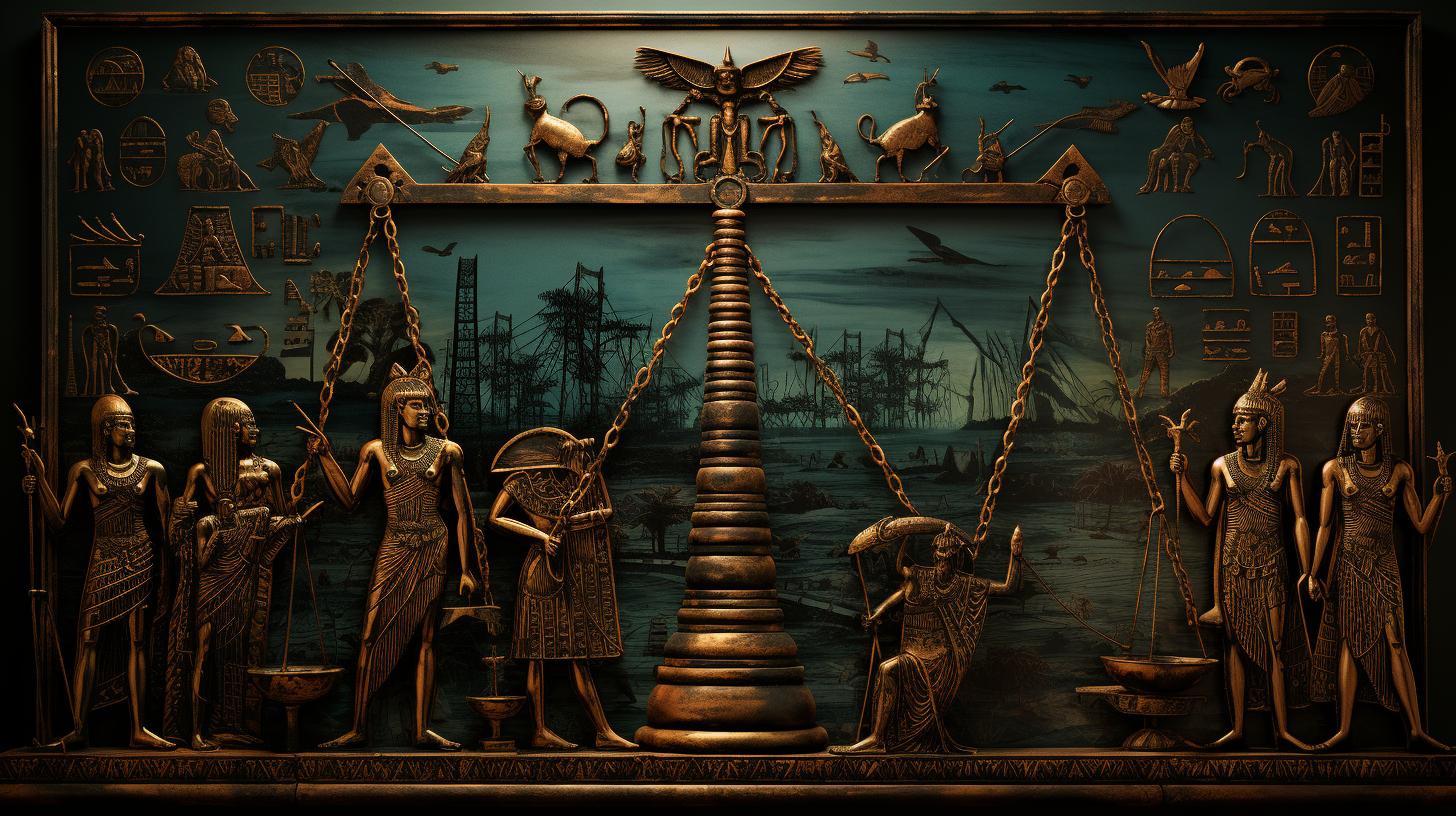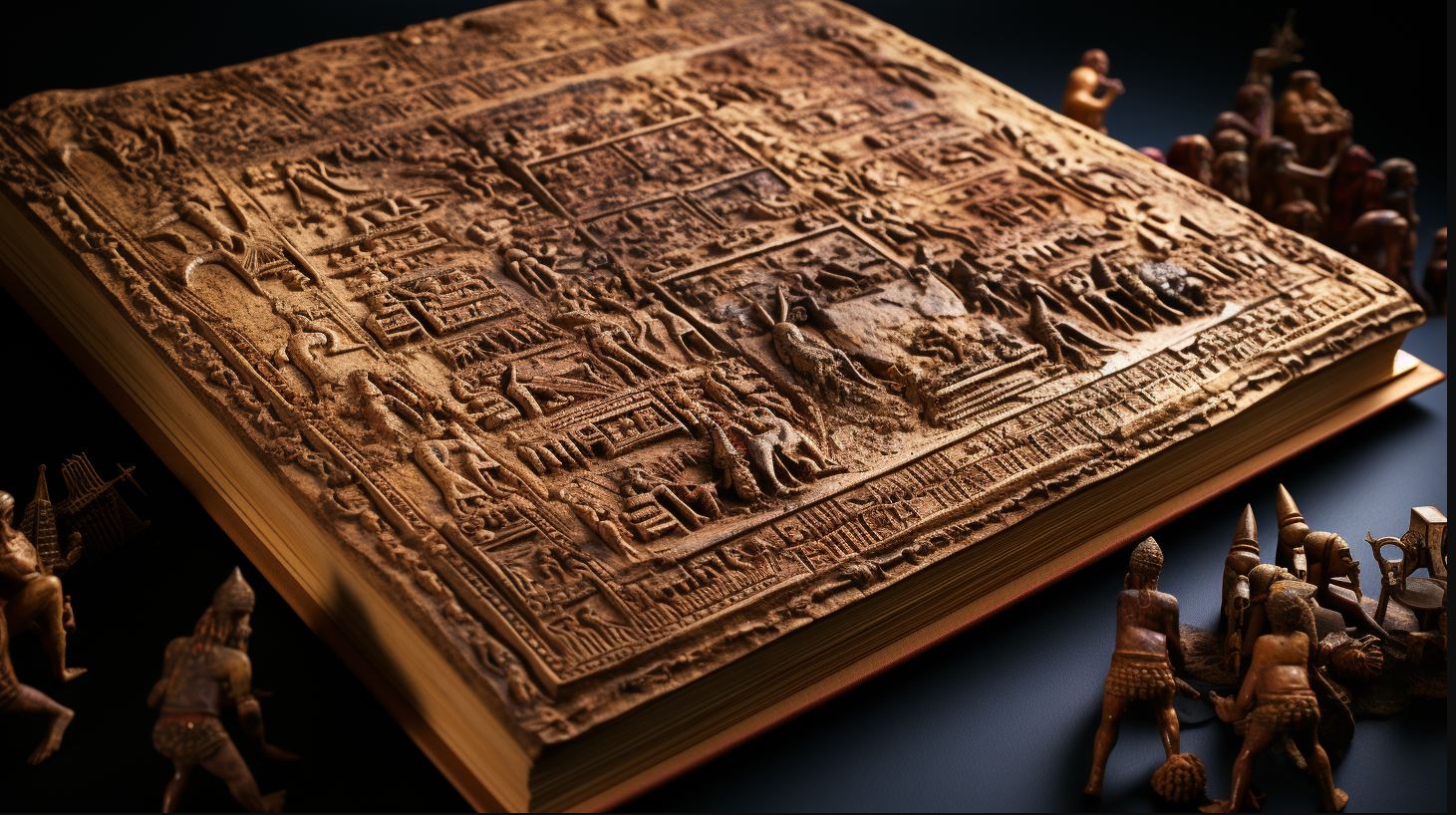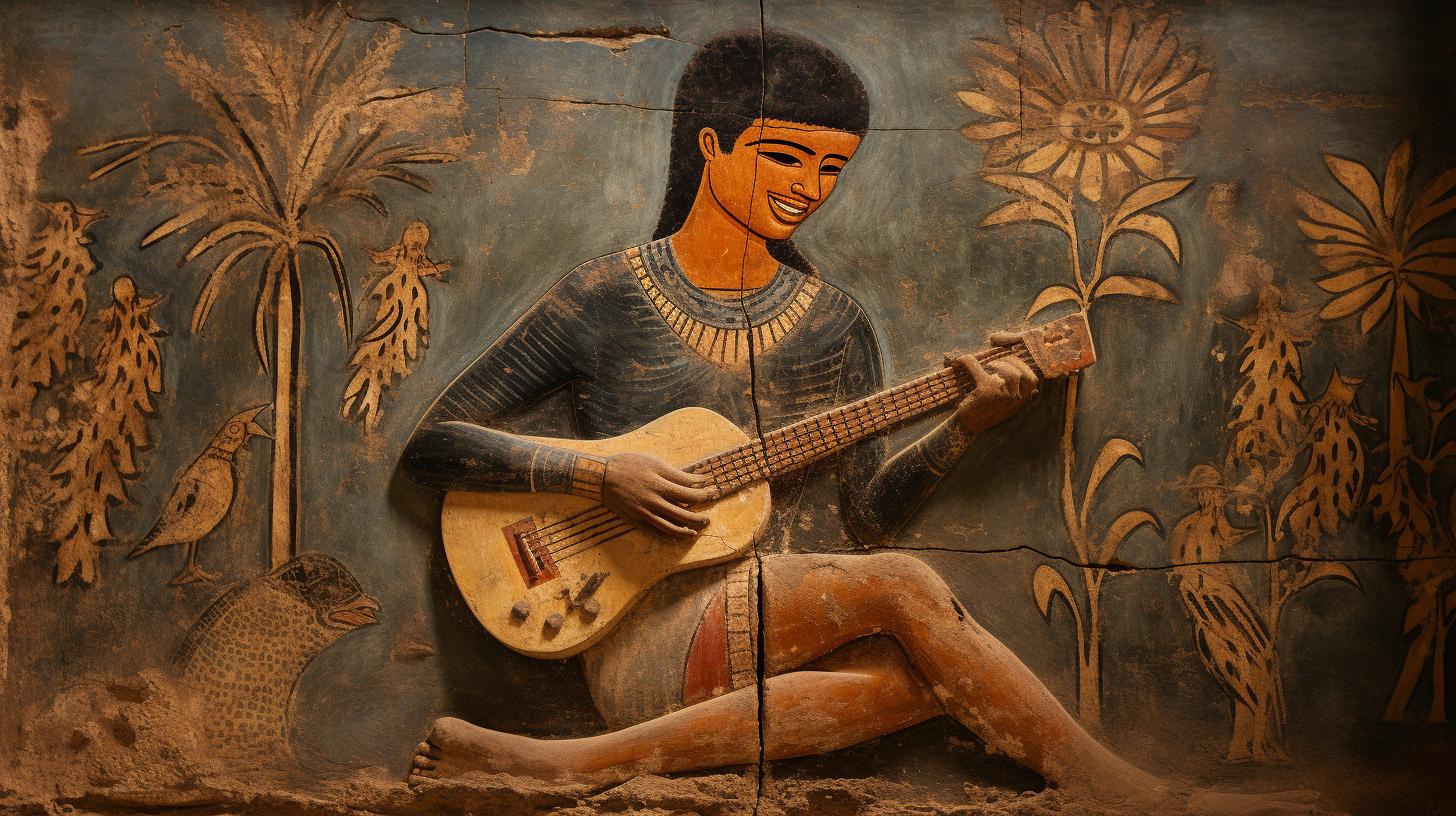Taweret and Bes: Ancient Egyptian Deities of Protection and Fertility
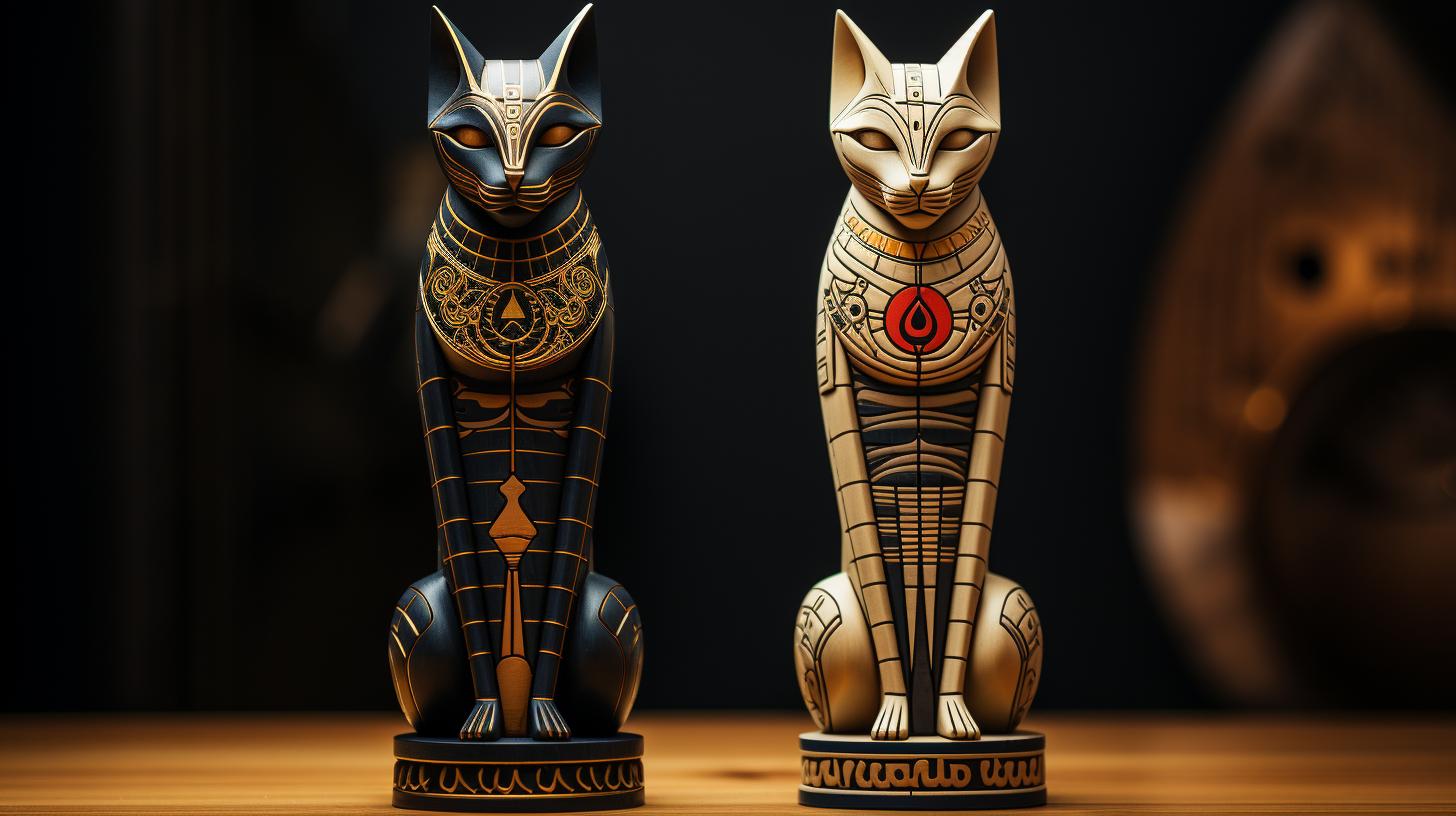
Taweret and Bes are two deities that were very important in ancient Egyptian religion and in the Egyptian gods and goddesses pantheon. Taweret was a goddess associated with protection of pregnant women and children, while Bes was a guardian of fertility and the home.
Both deities were represented in art and mythology, and their influence extended beyond ancient Egypt. In this article, we will explore the origins, significance, and cultural impact of Taweret and Bes.
Whether you are interested in Egyptian mythology or simply want to learn more about these fascinating deities, this article has something for everyone.
Background Information on Taweret and Bes
Taweret and Bes were important deities in ancient Egyptian religion. While they had distinct roles and associations, they shared some commonalities as protectors of women and children. This section provides some background information on Taweret and Bes, including their origins, significance in Egyptian mythology, and depictions in art and literature.
The Origins of Taweret and Bes in Ancient Egypt
Taweret and Bes both originated in ancient Egypt, one of the world’s oldest civilizations. Their exact origins are unclear, but they likely evolved from pre-existing animal deities. Taweret’s appearance, which combines a hippopotamus, a lion, and a crocodile, may have been inspired by the dangerous animals that lived along the Nile River.
Bes’s distinct appearance, which features a dwarf-like body and a lion’s head, may have been influenced by Nubian and Syrian people.
The Significance of Taweret and Bes in Egyptian Mythology
Taweret and Bes played important roles in ancient Egyptian mythology, particularly in the spheres of fertility, childbirth, and home protection. Taweret was considered a protective goddess for pregnant women and children, while Bes was a guardian of fertility and humor, as well as a protector of the home.
Both deities were celebrated for their abilities to drive away evil spirits and ensure safety and prosperity for families.
The Depictions of Taweret and Bes in Art and Literature
The depictions of Taweret and Bes in art and literature reflect their roles and associations. Taweret was often depicted as a fierce and protective goddess, with a hippopotamus’s body, a lioness’s mane, and a crocodile’s tail.
She was usually shown with a large pregnant belly, emphasizing her role as a protector of mothers and children. Bes, on the other hand, was depicted with a dwarf-like body, a lion’s mane, and a prominent phallus, emphasizing his role as a god of fertility.
He was often depicted in household items such as mirrors and cosmetics cases, as well as in amulets worn by women to protect themselves and their children.
Taweret: The Protective Goddess for Pregnant Women and Children
Taweret was an important deity in ancient Egypt who was associated with protection, childbirth, and fertility. As a goddess of fertility, Taweret was believed to protect women during pregnancy and childbirth, as well as to ensure the fertility of the land and the people.
The Role of Taweret in Fertility and Childbirth
As a goddess of fertility and childbirth, Taweret played a crucial role in ensuring the health and well-being of pregnant women and their unborn children. According to ancient Egyptian beliefs, Taweret would protect women during childbirth by warding off evil spirits and ensuring a safe delivery.
Taweret was also regarded as a guardian of newborn children, offering them protection and ensuring their survival. Women would often pray to Taweret during pregnancy and childbirth, hoping for her protection and guidance.
The Popular Use of Taweret Amulets by Women in Ancient Egypt
One of the most common ways that women in ancient Egypt sought the protection of Taweret was by using amulets. Taweret amulets were typically made of faience or other materials and featured the goddess in her characteristic form as a combination of a hippopotamus, a crocodile, and a lion.
These amulets were believed to have protective qualities and were often worn by pregnant women throughout their pregnancy to ward off evil spirits and ensure a safe delivery. The amulets were also used to protect children and other family members.
The Representation of Taweret in Art and Statues
The goddess Taweret was often depicted in art and statuary in a variety of ways. Her characteristic form as a combination of a hippopotamus, crocodile, and lion was often shown in sculpture and painting, either as a free-standing figure or as a relief.
The goddess was also often shown in association with other deities or animals, such as Bes or the uraeus serpent. In some depictions, Taweret was shown holding various objects, such as a scepter or a knife.
- Examples of Taweret Depictions in Art:
- Taweret Amulet, c. 664-30 BCE, British Museum
- Relief of Taweret, c. 1285-1250 BCE, Metropolitan Museum of Art
- Taweret Sickle, c. 664-332 BCE, Brooklyn Museum
- Statue of Taweret, c.
18th dynasty, Louvre Museum
In conclusion, Taweret played a significant role in ancient Egyptian religion as a goddess of protection, fertility, and childbirth. Women sought her help and guidance during pregnancy and childbirth, and Taweret was often represented in art and sculpture throughout ancient Egyptian history.
As we explore the other aspects of Taweret and Bes in this article, we will see how important they were to the lives of ancient Egyptians and their enduring cultural influence.
Bes: The Guardian of Fertility, Humor, and the Home
One of the most popular and enduring deities in ancient Egyptian religion was Bes. He was initially worshiped as a god of war, but over time his significance expanded and he became associated with humor, fertility, and the home.
Scholars believe that Bes originated in the southern region of Nubia, but his worship spread throughout Egypt and beyond. Here we will delve into his origins, importance, and influence in ancient Egypt.
The Origins and Importance of Bes in Egyptian Religion
Bes was believed to have originated from the Nubian region around the Nile river during the time known as the Old Kingdom period. He was initially a dwarf god of war, but he soon became popular as a domestic deity.
His popularity peaked during the New Kingdom era as people began seeing him as a helpful and protective household god. Bes became a celebrity god among the Egyptians and was widely viewed as a protector of mankind, households, and children.
Bes was often depicted in a grotesque fashion, with a large head, protruding tongue, prominent eyes, and shaggy hair. His odd form was intended to ward off evil spirits. People believed that he would use his loud voice and his frighteningly ugly appearance to scare away malevolent spirits.
Egyptians often had Bes statues placed in their homes or personal amulets made to keep him close by to provide protection.
The Protective Role of Bes for Women and Children
Bes was a god of fertility, humor, and the home, but his greatest importance was his protective role. Bes was believed to guard women during childbirth and children from malevolent spirits.
He was often depicted dancing and brandishing a sword, wearing the hide of a lion and the headdress of a pharaoh. Legends say that Bes would consistently play music in the home to help lull crying babies to sleep.
Bes was particularly important in the world of ancient Egyptian women, who regarded him as their primary helper during childbirth. Women who were pregnant with their first child would commonly have a Bes image or amulet in their homes as they awaited the birth.
Bes would often be added in art pieces such as mirrors, cosmetic cases, and furniture to remind women and children of his protective presence.
The Depictions of Bes in Art and Household Items
Bes was an important figurative image throughout ancient Egyptian art, often featuring in any type of art that could be found in a home from the New Kingdom period, such as furniture and pictures on walls.
His vigorous and cheerful image was also frequently used as an amulet hung around the neck of anyone who needed his protective and comforting presence. His image could even be found on personal items such as bed frames, stools, and chairs.
Bes was an icon of good fortune in ancient Egypt, and his image continued to be used by many people in different periods through history.
The Connection between Taweret and Bes: Protecting Mothers and Children
In Ancient Egyptian religion, Taweret and Bes were two important deities associated with protection, fertility, and childbirth. While they had distinctive characteristics and representations, they shared a common goal of safeguarding mothers and their offspring.
In this section, we will explore the similarities and differences between Taweret and Bes, their roles in Ancient Egyptian households, and the overlap of their associations with protection and fertility.
The Similarities and Differences between Taweret and Bes
- Taweret and Bes were both protective deities associated with motherhood and fertility.
- Taweret was a goddess and was depicted as a combination of a hippopotamus, a lioness, and a crocodile, while Bes was a dwarf deity with a lion’s mane and features.
- Taweret was associated with comfort and childbirth, while Bes was known for his sense of humor and his role as a household guardian.
- Both Taweret and Bes were often depicted with their arms raised, ready to defend against evil spirits and other threats.
- While Taweret was a more universal goddess, worshiped throughout Egypt, Bes was a more localized deity, popular in Lower Egypt and the Delta region.
The Role of Taweret and Bes in Ancient Egyptian Households
Taweret and Bes played an important role in Ancient Egyptian households, where they were both worshiped and invoked to protect mothers and their children.
During childbirth, Taweret was believed to offer her calming presence to expectant mothers, while Bes watched over the newborn baby, ensuring its safety. They were also both associated with daily household chores, such as cooking and cleaning.
The Overlap of Taweret and Bes’ Associations with Protection and Fertility
Both Taweret and Bes were strongly associated with protection and fertility, making them important deities in Ancient Egyptian religion. Taweret was associated with the Nile River, which was seen as the source of life and fertility in Egypt, while Bes was often depicted with male genitalia, emphasizing his role in fertility.
Both of them also had a protective function, guarding against evil forces and ensuring the well-being and flourishing of their followers.
The connection between Taweret and Bes highlights the importance of motherhood, protection, and fertility in Ancient Egyptian culture. Their shared associations and functions made them crucial deities in everyday life, and their influence can still be felt in modern times, as evidenced by the continued use of Taweret amulets and Bes depictions in popular culture.
Understanding their significance can provide valuable insights into the beliefs and practices of this fascinating ancient civilization.
The Cultural Significance of Taweret and Bes in Ancient Egypt and Beyond
Taweret and Bes were not only important figures in ancient Egyptian religion but also had a significant cultural impact on the region and beyond. From historical evidence to modern-day adaptations, the influence of these deities extends across time and cultures.
Taweret and Bes in Egyptian Historical Record and Evidence
Archaeological evidence reveals the widespread use of Taweret amulets, suggesting the widespread popularity of this protective goddess for mothers and childbirth. The mention of Bes dates back to the Old Kingdom, and he was known as a protector of pharaohs and gods alike.
The frequent depictions of these deities in artwork and literature also emphasize their importance.
The Continued Use of Taweret Amulets and Bes Depictions in Modern Times
Today, Taweret amulets remain a popular form of protection for pregnant women and children, even outside of Egypt. Bes is also still significant in parts of Africa and the Middle East, where he is associated with healing and protection.
Taweret and Bes have also been adapted into popular culture as seen in movies, TV shows, and books.
The Influence of Taweret and Bes on Other Religions and Cultures
- Taweret and Bes have influenced other ancient religions, such as the Minoan’s worship of the Snake Goddess, who shared Taweret’s protective qualities
- Bes has been compared to the Roman god, Silvanus, who also had a protective role as lord of forests and fields
- The popularity of Taweret and Bes in modern-day New Age spirituality reveals the deities’ continuing significance even outside of their original context
The cultural significance of Taweret and Bes extends far beyond their origins in ancient Egypt.
These deities continue to impact various cultures and beliefs, a testament to their enduring power and relevance.
Taweret and Bes’ Influence Beyond Ancient Egypt
Taweret and Bes have continued to have an impact beyond ancient Egypt. Their influence can be seen in art, literature, and popular culture. The enduring fascination with these deities is a testament to their significance and importance.
Art and Literature
Taweret and Bes have been depicted in art and literature throughout history. Their images have appeared on everything from amulets to furniture. Many ancient Egyptian texts refer to these deities, and some even include stories about them.
Taweret and Bes have also been incorporated into modern literature and art, appearing in works by contemporary artists and authors.
Popular Culture
Taweret and Bes have also gained popularity in modern pop culture. They have appeared in movies, TV shows, and video games. In some cases, they are portrayed as more modern, updated versions of themselves.
For example, Taweret has appeared in the TV show “Lost,” portrayed as a pregnant woman who protects the Island.
The Lessons That Can Be Learned from Taweret and Bes’ Associations with Family and Protection
Taweret and Bes are often associated with family, protection, and fertility. Their stories offer important lessons that can be applied to modern life.
Importance of Family
Taweret and Bes are both associated with family. Taweret protects pregnant women and children, while Bes guards the home. By emphasizing the importance of family, these deities remind us of the value of our loved ones and the need to protect them.
Protection
Taweret and Bes are guardians who offer protection to those in need. Their association with protection highlights the need for safety, security, and support. By invoking these deities, people are reminded to be vigilant and to take steps to ensure their own safety and that of their loved ones.
Fertility and Creativity
Taweret and Bes are both associated with fertility and creativity. Their stories highlight the importance of these qualities in human life. By embracing our creative sides and fostering fertility in all aspects of our lives, we can achieve greater fulfillment and success.
The Continuing Interest and Fascination with Taweret and Bes in the Modern World
Despite the passage of time, Taweret and Bes remain fascinating and intriguing figures. Their continued popularity is a testament to their enduring relevance and importance.
The Appeal of the Mysterious and the Unknown
One reason for Taweret and Bes’ continued popularity is their mysterious and unknown qualities. People are drawn to the enigmatic and the unknown, and these deities offer plenty of intrigue and fascination.
The Universal Themes of Protection and Fertility
Taweret and Bes’ association with protection and fertility also contributes to their continued popularity. These are universal themes that resonate with people across cultures and throughout time.
The Potential for Spirits and Magic
Finally, Taweret and Bes’ association with spirits and magic also contributes to their continued interest. Their stories offer the potential for supernatural forces, which remains a powerful draw for many people.
The enduring importance of Taweret and Bes in history and popular culture showcases the ongoing relevance of ancient Egyptian religion and underscores the human need for protection and fertility. Whether we are drawn to their mysterious qualities, their universal themes, or their potential for magic, Taweret and Bes will continue to fascinate and intrigue us for generations to come.
…

